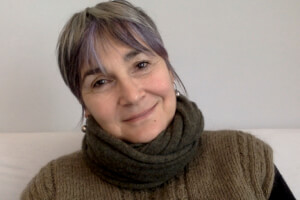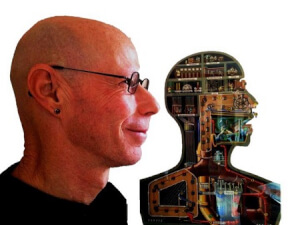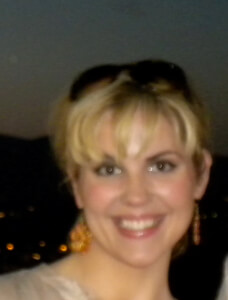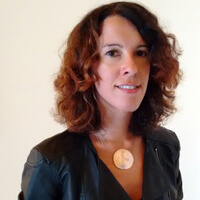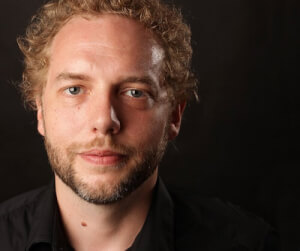Moderator: Dolores Steinman
Our fleshy existence is a complex (risky) business: some intellectual explorers navigate with a saw or scalpel and others through cameras and film or data sets/imaging scans or experimental methodology or plastic compounds. Locating the human body at the intersection of art, medicine and popular culture implicates multiple actors and blurs the boundaries of subject/object, discipline/profession, self/other.
This panel brings together scholars from a variety of disciplines to think critically and historically about the deployment of medical and scientific images and objects that construct, challenge and transgress representational and behavioural boundaries. We will investigate the human body as a site of discoveries and innovations, but also as an effigy of self and a
medium for art and undisciplined play, all of which work to instate boundaries but also instigate transgression, and ultimately transcendence. We will describe and analyze illustrations, models, photographs, devices and designs that perform encryption, compression, metonymy at and over the edge of representational comportment, in registers that are mimetic, synoptic, reductionist, or proliferative. The artist, scientist, technologist, patient, cadaver, coder, reader and viewer, take on different identities and functions: the surveyor, the procurer of (raw, cooked) data, the hacker, the leaker, the reader, the voyeur, even recalcitrant matter... Everyone is implicated.
This panel will explore those entangled matrices and networks, and the different, often wayward, effects conjured. The presentations range from Eugène-Louis Doyen’s shock-inducing anatomical and surgical photography in early 20th-century Paris, to the global anatomical exhibitions of Gunther von Hagens’ provocatively cut and posed cadaver plastinations, to the in-between world of Bio-Art and Medical Sciences (in a quick walk across shared techniques yet different interpretations), to the politics and cultural poetics DIY biotech. We will then end with a group discussion on what the human body and technologies of the body perform and signify in the nexus between medicine, art and popular culture.
Anatomy’s photography: Showmanship, transgression & the reinvention of the anatomical image; or the strange case of Eugène-Louis Doyen (1859-1916)
Michael Sappol
It’s Paris, 18 April 1910. Celebrity surgeon-anatomist-provocateur Eugène-Louis Doyen (1859-1916) takes the stage to deliver the introductory lecture of a course on topographical anatomy. The auditorium is packed and the professor intends to confront the crowd with a multimedia carnivale moderne of medical science. There will be: lantern-slide projections of colored photographs of machine-sliced cross-sections of “scientifically mummified” cadavers; silent films of surgeries; displays of actual anatomical slices, via direct presentation and episcopic projection; even a bit of onstage dissection. As Doyen commences, a riot breaks out. His supporters and detractors come to blows. The lecture becomes a notorious fiasco, covered in detail in the Parisian press and even, across the ocean, the New York Times. It’s an episode full of juicy details that bear on the politics and practice of elite French medicine, the staging and meaning of scientific lectures and photographic presentation, the flamboyant career of doctor Doyen, and the cultural and
political milieu of belle époque France. Yet historians have somehow overlooked the riot, and overlooked anatomical photography. But the subject deserves attention. After Nikolaus Rüdinger published his pioneering photographic atlas in 1861, ambitious anatomists all over the world began experimenting. And took liberties. They manipulated their many thousands of photographs in theatrical and painterly ways, spectacularly cutting, slicing, posing and lighting their cadavers and cadaver parts. The artist’s brush was as evident as the anatomist’s scalpel and the photographic image was subjected to wayward aesthetic impulses — especially in the pictorial borderlands, where representation runs free of utilitarian justification. The anatomical photograph put on a show, compelled viewers to look and look again. And that raised aesthetic, semiological and epistemological questions about beauty, ugliness and scientific comportment: how those categories are constituted; how they relate to truthfulness and falsification. No anatomist was more provocative than Doyen. Yet his photography — amazing, disturbing, unforgettable — has been oddly forgotten. That fact alone calls for further investigation. This paper will consider photographic anatomy as performance and showmanship — scientific, social, professional, aesthetic, political. I want to think about how excess functioned in fin-de-siècle scientific and representational presentation, how the scientific presentation could harbor image practices that went far beyond what was permissible in other domains. Transgression. The focus: the 279 “heliotyped” photographic plates of Doyen’s provocative Atlas d'anatomie topographique (1911-12), an unheralded masterpiece.
Gunther von Hagens and the Seductive Flesh of Cadavers
Kimberly Johnson
She is stripped, bloodied and naked. The absence of her skin reveals the lily-white cadaveric flesh of the unborn fetus inside her. This parturient body is a plastinate, a cadaver that has been injected with plastic polymers, and posed according to the design of Gunther von Hagens. Von Hagens titled her Reclining Pregnant Woman (2001). Otherwise known as anatomical venuses, seductively posed female anatomical figures were historically intended to promote the acquisition of intellectual enlightenment or scientific knowledge. Conventionally, images and models of the expectant maternal body were not as overtly sexualized. Uncoupling this tradition, von Hagens designs the pose of the parturient cadaver with the eroticized vocabulary established in his other female compositions. The sensually posed maternal cadavers of BodyWorlds confront the viewer as doubly transgressive flesh: the cadaver that arouses the male gaze and the mother that ends the life of her unborn fetus.
This fetishistic anatomical scopophilia initially engages the visitors on the premise of scientific enlightenment yet manifests in spectacles of scandalous and gendered poses that blur the boundaries between eroticism and death, creation and annihilation, possession and loss, autonomy and subjugation. The language of sexuality has traditionally been employed by scientific study to illustrate models of natural relationships such as kinship or genealogy. Building upon that language, in each BodyWorlds exhibition, creator Gunther von Hagens constructs a visual field of plastinated cadavers that attempts to organize visual pleasure and manage social anxieties. To mitigate the tension between pleasure and anxiety, a central feature of this program positions female cadavers as bodies of difference, defining them as objects for sexual pleasure and sites of fetal manufacture.
Implicated in the narrative establishing female difference is that of the fetus. The fetal remains external to the maternal body are framed as holy relics. Like Lennart Nilsson’s electron microscope photographs, the fetus is presented as something autonomous, floating independently in a dark, alien space. The independent fetal subjecthood is presented as a relief to that trapped inside the maternal cadaver—positing a fleshy challenge to the naturalization of the heteronormative family that began in the bio-medical sciences in the late eighteenth century.
This stark, isolated mass, estranged from the female body, marks the dismissal of maternal authority and the systematic, professionalized denial of feminine self-knowledge. For the voyeuristic viewers of BodyWorlds, neither the female/maternal nor the fetal narrative is negotiated through the lens of scientific interrogation but rather its intersection with scandalous presentation, provocative gender norms and the sensational aesthetics of the art historical canon. While the traditional male gaze is encouraged by von Hagens, so are its simultaneous desires and anxieties: woman as seductress, woman as annihilator. The scientific discourse is included not as guiding facts of nature but rather to underscore what the visuality of display argues about gender roles—to establish a doubling of otherness. Each of these female cadavers presents conflicting possibilities of pleasure, fear and loss.
Imaging versus Anticipating the Patient’s Body;
The limits of Data-Visualization in the early stages of MRI Development
Silvia Casini
Research in biomedicine and genetics after the Second World War was boosted by the advent of digital techniques of visualization and computer-assisted imaging technology. Thanks to the computerization of medical observation, imaging has gained a primacy in medicine and healthcare that it never had before (Carusi et al. 2015; Leder 1992). Imaging is a central feature of diagnostic and treatment procedures, and of the patient experience. It is also a field in transition, tied to cycles of innovation in biomedicine and to a transformation of the relationship between the patient’s body and the medical image. Non-invasive imaging procedures put the living body of the patient at the center of their investigation, but often in the guise of a medical image, with the actual body remaining absent.
Retrospective narratives of biomedical innovation omit the role played by aesthetics, knowledge-making and craft skills, framing them as peripheral to science. My paper investigates how physicists anticipate (or not) the body of the patient during the early stages of Magnetic Resonance Imaging (MRI) development in the biomedical physics department at the University of Aberdeen. The Aberdonian development of MRI technology has been neglected in the transnational history of MRI, which privileges theory creation over practical making (Prasad 2014). The Aberdonian biomedical physics laboratory, under the guidance of the physicist John R. Mallard, developed MRI for clinical purposes between the late 1960s and the early 1980s with the building of Mark I, the world’s first whole-body MRI clinical scanner, and with the invention of the spin-warp method which became the global standard for data–image conversion.
The ability to ‘anticipate’ the body of the patient before the data-visualisation pipeline is black-boxed and clinical trials start, is crucial to the development of a biomedical imaging technology for clinical purposes. A technology is made not just with engineering but also with a leap of the imagination. The anticipation of the body of the patient, as I will argue, can occur through acts of transgression and can take multiple forms. For example, any references to the patient can take the form of pictures or words that are paratextual to the main technical argument advanced in a scientific article. Or, the body of the patient is anticipated through the decision of scientists to act as guinea pigs putting their own bodies through scans to provide the normative references for patients’ bodies. When clinical trials started, components of the scanner (such as the bed) needed adjusting because the prototype scanner had not been designed with the patient’s body in mind. Changing this process, which frequently occurs in the early phases of technological development, is not just a matter of small tweaks but requires a big shift in mindset. A failure in the technology is largely a failure of the imagination.
Bearing upon Annemarie Mol’s work on the body multiple (Mol 2002) and using previously unknown archival sources, interviews and extensive laboratory ethnography, I retrieve the multiple presences and agencies of bodies. I do not separate these bodies from the practices and the instruments through which bodies are sliced (digitally), re-assembled, peered into,
quantified and visualized from and as data. In the process of technological development, bodies are often left behind in the ensuing object or data visualization. Bodies are present as ghosts—traces that witness scientists’ body-work and embodied imagination with data collection, interpretation, and transmission.
This Bloody Sound
Dolores A. Steinman
David A. Steinman
"...I found the task so truly arduous... that I was almost tempted to think... that the movement of
the heart was only to be comprehended by God. For I could neither rightly perceive at first when
the systole and when the diastole took place by reason of the rapidity of the movement..." –
William Harvey
Exploration and representation of blood flow have always been tricky to achieve as access to, and examination of, the human body was among the most enduring taboos throughout history. Dissections (either considered pollution of the body, or desecration of it) would only reveal collapsed vessels while the flow of blood remained to be imagined or extrapolated. However, taboos were not viewed by anatomists as barriers or prohibitions but rather considered an incentive to seek alternative ways. With time, these legal or religious restrictions were transgressed in a fashion akin to a marine transgression, namely smooth yet relentless and incremental, with regimes and edicts coming and going in waves, so were the responses and effects: since views and obstacles were in constant flux, the anatomists’ approaches evolved accordingly. Throughout ever-changing rules and rulers, the unseen body and its mechanism started to be uncovered.
Despite of, or due to technological limitations the first detailed description of blood flow was made by William Harvey in 1628. His account was based on observation as well as on theoretical assumptions and speculations (in debt, detailed observations at key moments of change during the cardiac cycle were impossible). The current advent of new technologies –
both sustaining and subverting society – allowed for ways of revealing, investigating and representing the hidden body in ways consistent with the current social norms. Engaged on this path, emerging frameworks for the validation of knowledge made possible our group’s incursions into understanding and describing the particularities of the complex cardiovascular
phenomena encountered, with a particular interest in the ailing system.
The research conducted in our lab has been concentrating on the rapidly changing blood flow patterns. Lately our interest is focused on cerebral aneurysms (area otherwise accessible only through invasive methods). Over the last two decades, the computer-simulated flow patterns we generated have come a long way: from our first attempts that visually symbolised the velocity vectors, to a less schematic hand-drawn-then-eventually-automated carousel, and finally to a bi-modal manner, namely the audio-visual simulation of flow through cerebral aneurysms: [u]sing graphics and sound to amplify key features, while suppressing irrelevant information, would allow the user to visually concentrate on one field, while listening to the
other. Certain aspects of complexity can be heard better than it can be seen.” [1]
We can conclude by saying that at each point along the way, we strived to transcend all historic limitations, and fine- tune the technology and its uses to answer William Harvey’s quests for not only distinguishing but also making accessible the information regarding that brief moment of change in flow, pattern and velocity of blood, between the systole and the diastole. Our research constitutes only an example of how anatomy and physiology are teaming and taming accessible technological developments in the search for non-invasive ways of accessing the body, yet not entirely sheltered from controversy and criticism.
Is biotechnology a tool or an endgoal?
Günther Seyfried
Biotechnology is, without doubt, one of the most important resources in dealing with a wide spectrum of challenges at the global level, not least being the contextualization of the natural world, its interactions and potential faults or weaknesses.
Bioart has proven to be a major element in engaging with biotechnology, as it enables a tangible encounter with a great number of issues concerning biotechnology, including paradoxes, ambiguities and uncertainties, by offering a non-normative approach in the exploration of the implications of and the challenges posed by biotechnology.
From its inception to today, the understanding of the terms as well as the uses of biotechnology changed - from brewing and baking to breeding and, lately, bioengineering – and so did its position in the contemporary social, political and economical contexts. To navigate these changes, the variety of disciplines now involved as well as challenging its methods and
ultimate goals, I set up a hands-on course meant to analyze key approaches to the use of processes abstracted from biology and life sciences and their use in art and design. Streamlining the students’ experience they are encouraged to explore the interdisciplinary character of biomediality in order to familiarize themselves with the role of methods, discourses and experimental designs and their mediation in the life sciences as well as the interrelation of bioscientific epistemes and form, in bioart and biodesign practices.
The course addresses important developments in synthetic biology, DIYbio, and related fields so that students can acquire profound understanding of the technological changes accompanied current by social shifts and their unfolding cultural and political impacts. At the same time, the Open Lab Class is designed to provide students from all disciplines with
sound practical knowledge about how to combine creative approaches through the use of experimental methods in art and the life sciences.
The ultimate goal of this exercise is to give the students a unique opportunity to learn and experiment with biological concepts, bioart and biodesign, basic genomics, synthetic biology, neuroscience, while offering them insights into the cultural and social implications of emerging cutting-edge techniques in biotechnology, such as genome editing for example (CRISPR-
Cas9).
Through establishing such a shared learning process that builds upon both theoretical knowledge along with practical proficiency, students are acquiring a repertoire of intuitive perspectives in understanding art, science and their common tool: technology, and how these influence attitudes, behavior and identities, both on an individual as well as on a social level.
As such, we consider that our style of engaging with the students and guiding them through the learning process gives them the opportunity to develop ideas and their supporting skills, as well to reach insightful conclusions. Through this process, I think that we are transcending limitation imposed by a narrow focus, as well as examine and criticize the presumptive transgressions. What may have been restricted by law or religion (in the past) seems to have morphed into capital and social engineering issues. Therefore I believe that our students are equipped with the understanding and practical ability to challenge these new limitations or restrains.
Back

